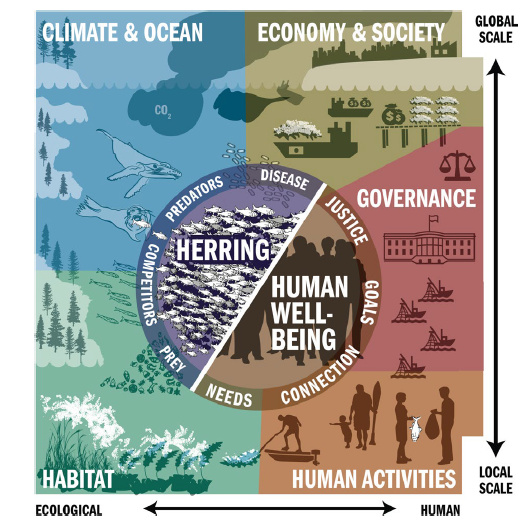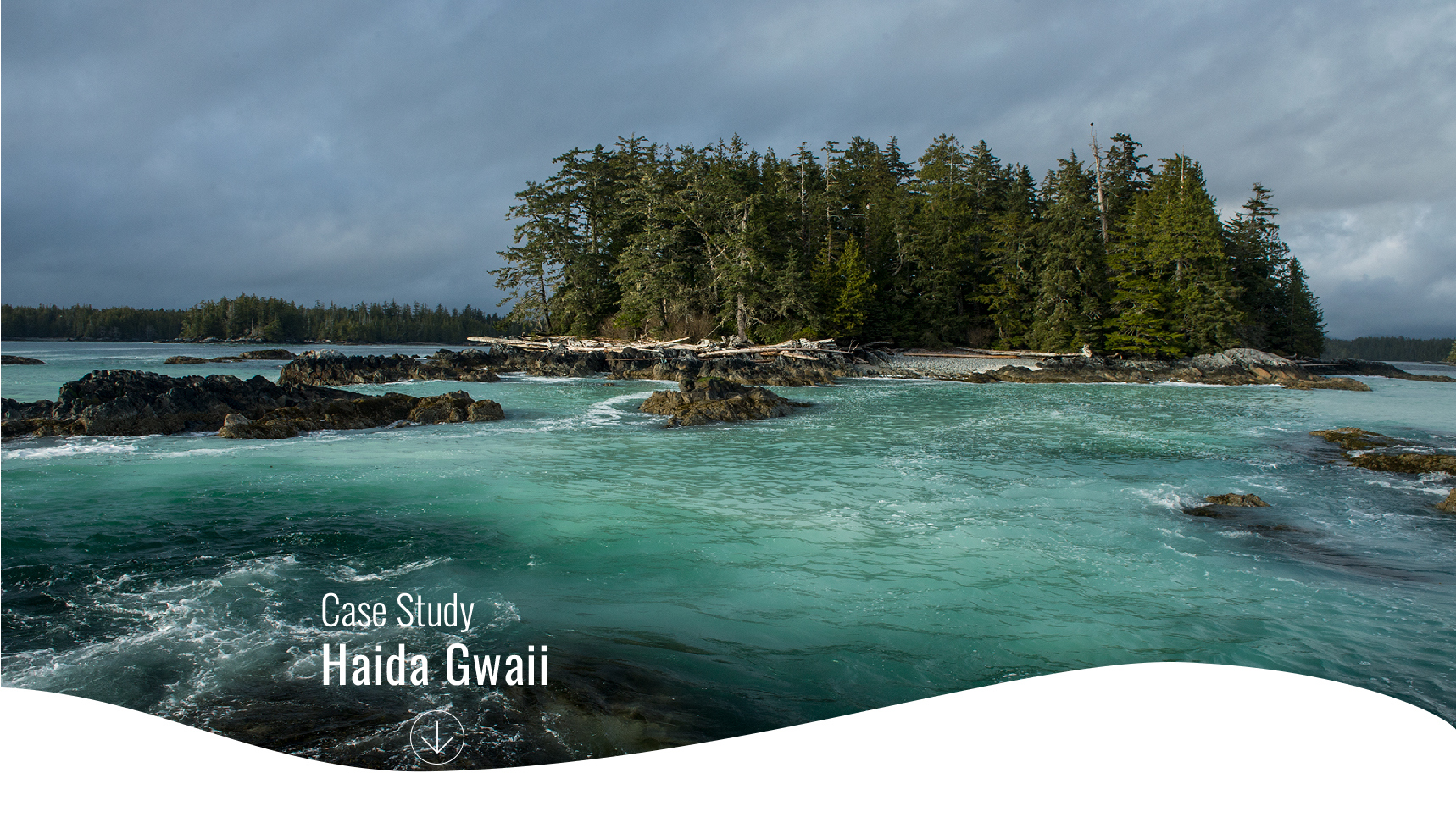Forage fish tipping points
 Globally, many fisheries have crossed critical thresholds (i.e., tipping points) with serious ecological, economic, and cultural consequences1,2. Marine forage fish species, such as herring, sand lance, sardines, anchovies, and squid, serve as the chief link between their prey (zooplankton and phytoplankton) and the predators that rely on them as a food source (e.g., mammals, birds, larger fishes). They are characterized by dramatically fluctuating populations and are vulnerable to overfishing and other pressures, such as climate change and disease3. Declines in these species have created major shifts in the social-ecological systems in which they are embedded. For example, in the 1940-50s, in response to changes in ocean climate and overfishing, sardine populations on the west coast of North America experienced a collapse, displacing a whole industry and affecting people’s livelihoods4,5.
Globally, many fisheries have crossed critical thresholds (i.e., tipping points) with serious ecological, economic, and cultural consequences1,2. Marine forage fish species, such as herring, sand lance, sardines, anchovies, and squid, serve as the chief link between their prey (zooplankton and phytoplankton) and the predators that rely on them as a food source (e.g., mammals, birds, larger fishes). They are characterized by dramatically fluctuating populations and are vulnerable to overfishing and other pressures, such as climate change and disease3. Declines in these species have created major shifts in the social-ecological systems in which they are embedded. For example, in the 1940-50s, in response to changes in ocean climate and overfishing, sardine populations on the west coast of North America experienced a collapse, displacing a whole industry and affecting people’s livelihoods4,5.
Across the northwest coast of North America, Pacific herring and its eggs or roe are critical prey for a host of fish (e.g., hake, Pacific cod, dogfish, salmon, rockfish), birds (e.g., puffins, gulls), and marine mammal predators (e.g., humpback whales, stellar sea lions, seals), as well as some terrestrial predators (e.g., black bears).

Declines in herring, like other forage fish, are thought to affect the recovery of these predators, some of which are threatened or endangered species. Recent work, for example, has quantified the link between the biomass of forage fish in the ecosystem and seabird breeding success. Cury and colleagues identified an ecosystem threshold of ~1/3 of unfished biomass needed to sustain seabird breeding, suggesting that forage fish should be maintained at levels higher than typical fisheries harvest guidelines allow6.
Herring has also been central to the social, cultural, and economic relations of coastal indigenous communities for many thousands of years7, and many communities seek to continue their traditional fisheries for herring and herring roe on kelp. Industrial seine and gillnet fishing of adult fish for their roe has also contributed to the economy and livelihoods of many communities across the Northwest Coast.
